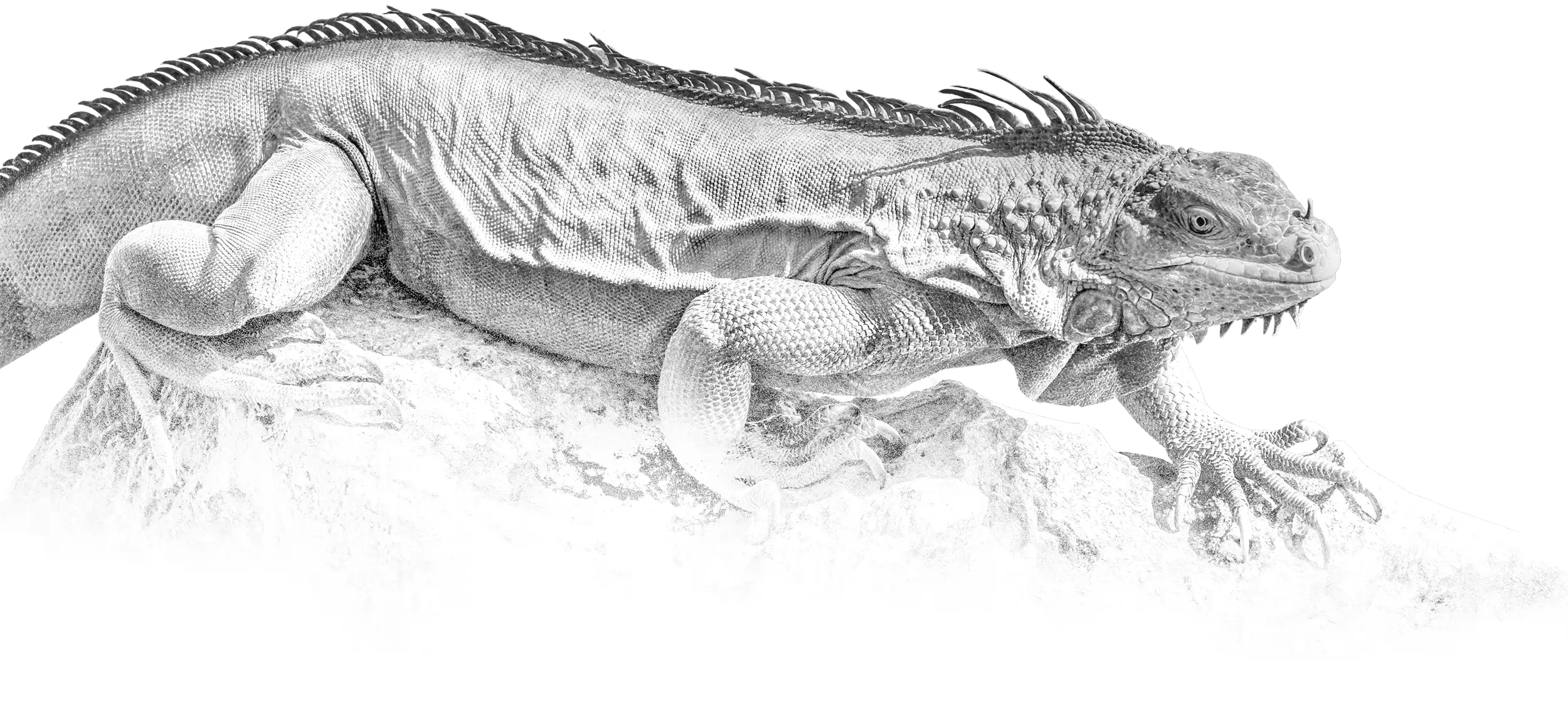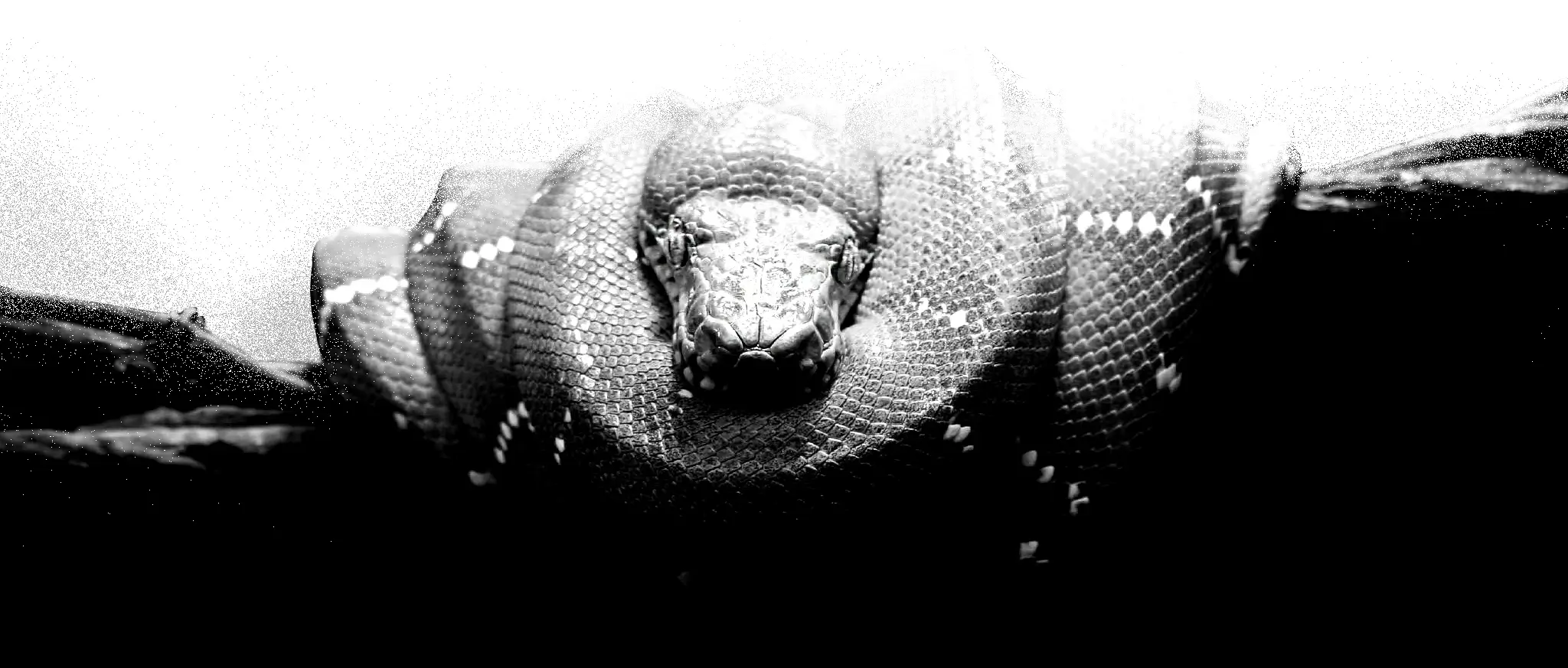
(Squamata)
Snakes and Lizards
Лускаті
Squamata is the largest order of reptiles; most members of which are commonly known as lizards, with the group also including snakes. With over 11,991 species, it is also the second-largest order of extant (living) vertebrates, after the perciform fish. Squamates are distinguished by their skins, which bear horny scales or shields, and must periodically engage in molting. They also possess movable quadrate bones, making possible movement of the upper jaw relative to the neurocranium. This is particularly visible in snakes, which are able to open their mouths very widely to accommodate comparatively large prey. Squamates are the most variably sized living reptiles, ranging from the 16 mm dwarf gecko (Sphaerodactylus ariasae) to the 6.5 m reticulated python (Malayopython reticulatus). The now-extinct mosasaurs reached lengths over 14 m.
Among other reptiles, squamates are most closely related to the tuatara, the last surviving member of the once diverse Rhynchocephalia, with both groups being placed in the superorder Lepidosauria.
Description
The trunk is covered with horny scales, scutes, or granules. The quadrate bone typically articulates with the cranium in a mobile manner. Of the temporal arches, only the upper is retained, or both may be absent. The pterygoid bones do not articulate with the vomer, and the transverse bone is usually present.
The teeth are attached to the upper or inner surface of the jaws, being of either the acrodont or pleurodont type. The vertebrae are amphicoelous or procoelous, with two or three sacral vertebrae when present. The ribs bear a single head, while abdominal ribs are absent or rudimentary.
The pineal foramen may be present or absent. Jacobson’s organ is generally well developed. The copulatory organ is paired, and the cloacal opening is transverse.
Reproduction
The male members of the group Squamata have hemipenes, which are usually held inverted within their bodies, and are everted for reproduction via erectile tissue like that in the mammalian penis. Only one is used at a time, and some evidence indicates that males alternate use between copulations. The hemipenis has a variety of shapes, depending on the species. Often it bears spines or hooks, to anchor the male within the female. Some species even have forked hemipenes (each hemipenis has two tips). Due to being everted and inverted, hemipenes do not have a completely enclosed channel for the conduction of sperm, but rather a seminal groove that seals as the erectile tissue expands. This is also the only reptile group in which both viviparous and ovoviviparous species are found, as well as the usual oviparous reptiles. The eggs in oviparous species have a parchment-like shell. The only exception is found in blind lizards and three families of geckos (Gekkonidae, Phyllodactylidae and Sphaerodactylidae), where many lay rigid and calcified eggs. Some species, such as the Komodo dragon, can reproduce asexually through parthenogenesis.
Studies have been conducted on how sexual selection manifests itself in snakes and lizards. Snakes use a variety of tactics in acquiring mates. Ritual combat between males for the females with which they want to mate includes topping, a behavior exhibited by most viperids, in which one male twists around the vertically elevated fore body of his opponent and forcing it downward. Neck biting commonly occurs while the snakes are entwined.
Parthenogenesis is a natural form of reproduction in which the growth and development of embryos occur without fertilization. Agkistrodon contortrix (copperhead snake) and Agkistrodon piscivorus (cottonmouth snake) can reproduce by facultative parthenogenesis; they are capable of switching from a sexual mode of reproduction to an asexual mode.
Reproduction in squamate reptiles is ordinarily sexual, with males having a ZZ pair of sex-determining chromosomes, and females a ZW pair. However, the Colombian rainbow boa, Epicrates maurus, can also reproduce by facultative parthenogenesis, resulting in production of WW female progeny. The WW females are likely produced by terminal automixis.
When female sand lizards mate with two or more males, sperm competition within the female’s reproductive tract may occur. Active selection of sperm by females appears to occur in a manner that enhances female fitness. On the basis of this selective process, the sperm of males that are more distantly related to the female are preferentially used for fertilization, rather than the sperm of close relatives. This preference may enhance the fitness of progeny by reducing inbreeding depression.

